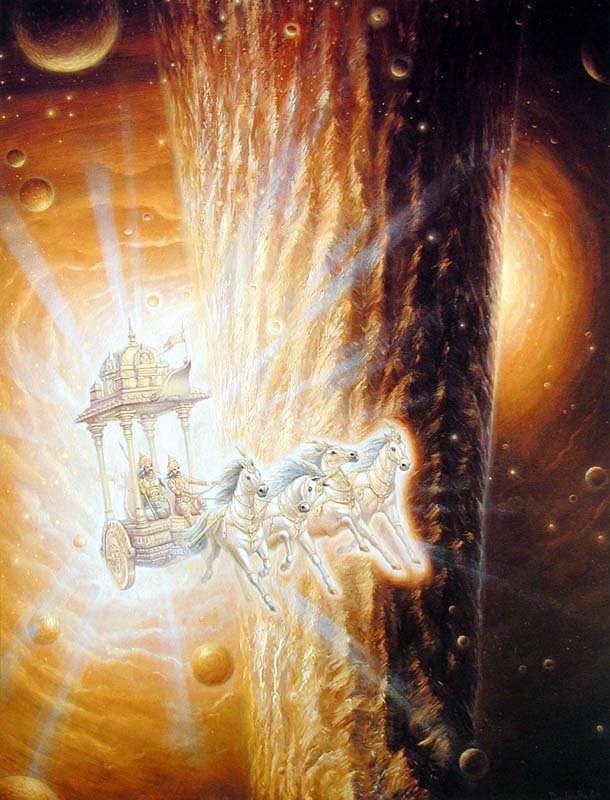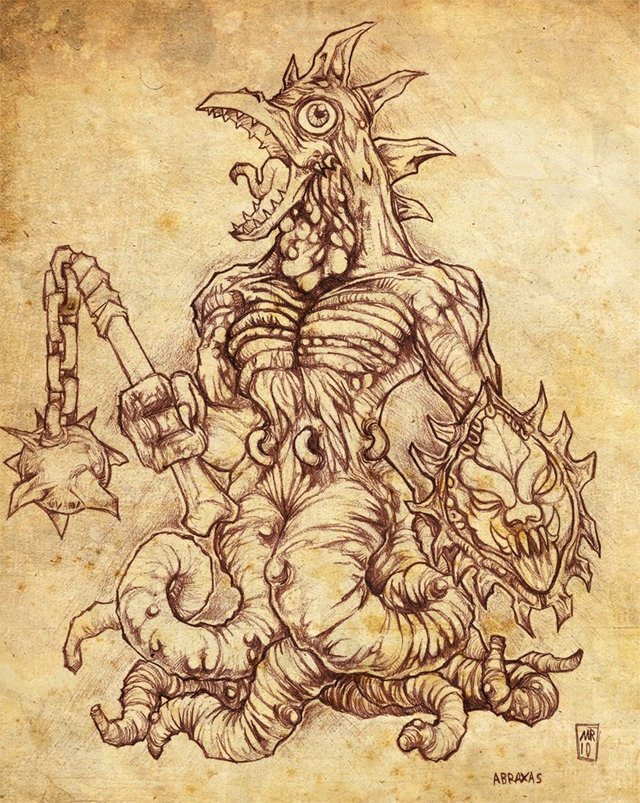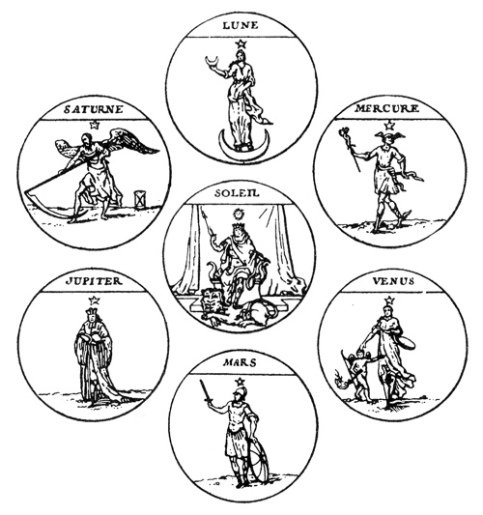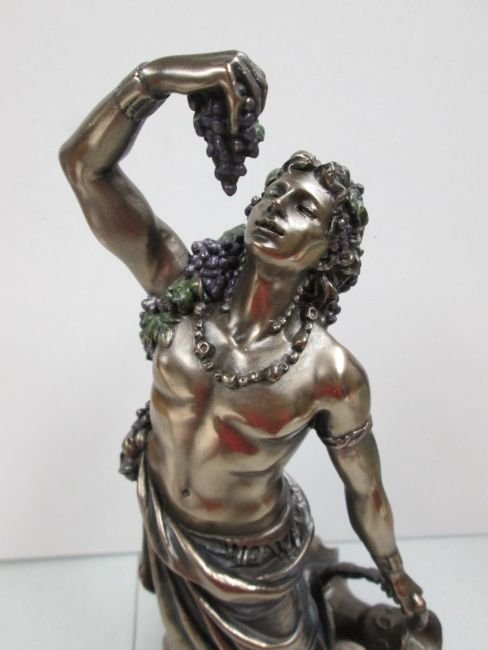Gnosticism (Part 5): Soma, Vedanta, Jnana, & Gnosis

The Vedic cosmology given in the Srimad Bhagavatam is virtually identical to the cosmology of the Gnostics.
In Hindu/Vedic mythology, the great King Priyavrata and his children, constantly remembered the Ultimate Truth:
"In their constant remembrance they observe, free from contaminations being purified by virtue of the highest yoga of devotion, in their hearts the Supreme Lord of all living beings. They then see Him directly as situated within themselves and realize that they are equal in quality, that they do not differ from the Lord of the Supersoul."
For 110 million years, Priyavrata reigned in such a state as an enlightened King:
"Without interruption for 110 million years there was the rule of the great soul who with the daily increasing amiability, femininity, shyness, laughs, glances and exchanges of love with his wife Barhishmatî enjoyed a life of pleasure, but confounded and defeated by it he lost his power of discernment."
He became bogged down by lust and, being weighed down, fell away from his enlightened state:
King Priyavrata "had fallen down because of his concern with the modes of matter in which he had never found satisfaction."
Becoming dissatisfied with the existing order, he became a second sun, spiraling opposite the existing sun, and in his path were formed the seven dvîpas ("islands") of the planets in Bhu-mandala (our planetary system). King Priyavrata assigned one of his sons to each planet, for them to rule over:
"For each of the dvîpas separately the husband of Barhishmatî, beginning with Jambûdvîpa, installed one of his faithful sons named Âgnîdhra, Idhmajihva, Yajñabâhu, Hiranyaretâ, Ghritaprishthha, Medhâtithi and Vîtihotra as their king."
Priyavrata subsequently came to his senses, realized his error, and regretted having handed the planets over to his sons. By this time his sons—the rulers of the seven planets—were engaged in an inter-planetary war: "It was [Priyavrata] who in order to stop the fighting of the nations on the different continents (dvîpas, i.e. planets), created the situation of the boundaries in this world," making it impossible for the inhabitants of the various planets to travel back and forth. (Cf. Srimad Bhagavatam)

Likewise, the Gnostic mythos speaks of seven archons (rulers), each represented as the king of one of the seven planetary spheres described by ancient astronomy. These archons, under the leadership of the demiurge, are the gods of this world. Quite literally, the gods are described as extra-terrestrial beings. They are not said to be immortal, nor much different from men (other than possessing magic powers and having extremely long lifespans). And this whole description matches closely the description in the Vedic (Hindu) mythos, where the demigods are associated with heavenly bodies.
In Gnosticism, the Hebdomad (seven planetary spheres) are presided over by these seven reigning archons (rulers), who were somewhat hostile extra-terrestrial beings. The Hebdomad is the Gnostic term for the solar system, corresponding to the Vedic Bhu-mandala.

In Gnosticism, the demiurge Yaldabaoth resides on the eighth planetary sphere (corresponding to the second sun in the Vedic parallel), and is responsible for the creation of the lower archons. Sophia (a.k.a. Barbelo) resides beyond the planetary spheres and is responsible for the creation of Yaldabaoth. In the Gnostic account, an interplanetary war breaks out in the heavens and Sophia has to intervene to stop it.
If we assume that Christian Gnosticism was based in Vedic teachings, i.e. that esoteric Christianity was rooted in Hindu religion, then there are several other things that come to light. The term veda literally means sacred "knowledge," so the terms Vedic and Gnostic are etymologically synonymous. The Bhagavad-Gita lists three main paths to moksha (liberation): karma yoga (yoga of action), bhakti yoga (yoga of devotion), and jnana yoga (yoga of knowledge). The third path, jnana yoga, is etymologically related to the term gnosis. They both come from the same proto-Indo-European root word, and they both denote "knowledge".
The Vedas record that an entheogenic or intoxicating drink known as soma was consumed by the ancients in order for them to see the gods. If Gnostic Christianity had Vedic roots, then this raises the question of whether or not the Eucharist is rooted in the Vedic practice of consuming soma in order to bring about an altered state of consciousness in which one might see the gods. The idea is not that far-fetched. To this day, there are two extremely intoxicating drink known as souma, which are popular on the islands of Chios and Rhodes in Greece. In Chios, the souma is made from grapes, while the souma in Rhodes is made from figs. The souma is said to be about 45% alcohol, which means that it would be much more potent than the wine that we know today. Such strong alcohol, combined with ritual, music, and dance could easily induce a trance state and serve as an entheogen. We know that wine was used for such purposes in the Dionysian mysteries. It is also a curiosity that Christ revealed himself to St. Paul by alluding to the words of Dionysus in the Bacchae of Euripides:
"DIONYSUS: Still obdurate, O Pentheus, after hearing my words! In spite of all the evil treatment I am enduring from thee, still I warn thee of the sin of bearing arms against a god, and bid thee cease; for Bromius will not endure thy driving his votaries from the mountains where they revel.
PENTHEUS: A truce to thy preaching to me! thou hast escaped thy bonds, preserve thy liberty; else will I renew thy punishment.
DIONYSUS: I would rather do him sacrifice than in a fury kick against the pricks; thou a mortal, he a god."
In the Book of Acts, when Jesus reveals himself to the Apostle Paul, he appears in a vision and alludes to this passage from Euripides:
"And Saul, yet breathing out threatenings and slaughter against the disciples of the Lord, went unto the high priest, And desired of him letters to Damascus to the synagogues, that if he found any of this way, whether they were men or women, he might bring them bound unto Jerusalem. And as he journeyed, he came near Damascus: and suddenly there shined round about him a light from heaven: And he fell to the earth, and heard a voice saying unto him, Saul, Saul, why persecutest thou me? And he said, Who art thou, Lord? And the Lord said, I am Jesus whom thou persecutest: it is hard for thee to kick against the pricks."(Acts 9:1-5)
A familiarity with the passage that Christ was alluding to reveals that Christ was doing more than confronting Paul, he was declaring himself to be a god. The author of this story was associating Christ with Dionysus, the Greek god of wine. This raises the question of whether the wine known as souma in the Mediterranean region was actually related to the Vedic soma. If it were, then perhaps early Christians combined elements of Vedic soma tradition with the Dionysian tradition due to the fact that souma would have been regarded as the domain of Dionysus in Greek tradition. Also worth noting is that one of Christ's most famous miracles was turning water into wine, a truly Dionysian feat.

All of this is really just scratching the surface. At the Last Supper, Christ picked up the Cup and said, "This is my body (soma)". Perhaps Jesus was misinterpreted by his disciples. Perhaps he was not meaning "body" at all, but referring to an intoxicating drink used as an entheogen, souma, or soma in the Vedic sense. But, then again, maybe he was self-consciously playing on the dual meaning of soma as meaning "body" and also referring to a strong drink.